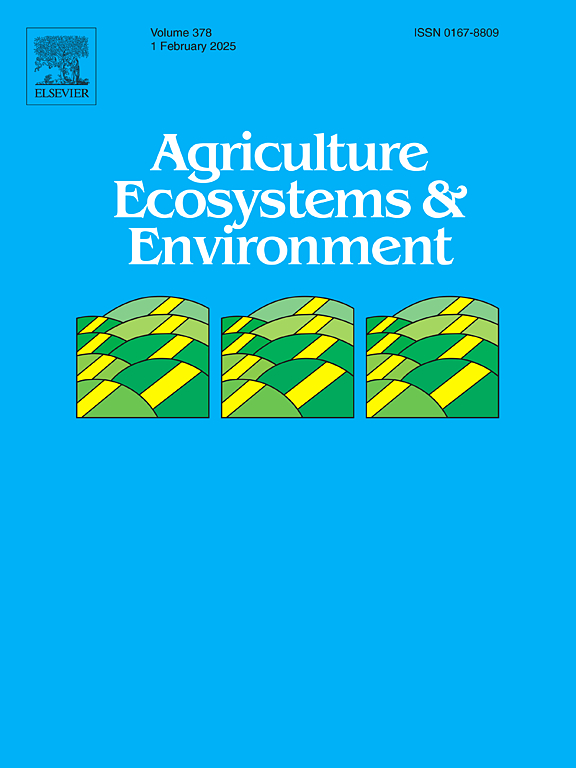Anthropogenic land-use driven changes in soil stoichiometry reduce microbial carbon use efficiency
IF 6.4
1区 农林科学
Q1 AGRICULTURE, MULTIDISCIPLINARY
引用次数: 0
Abstract
Microbial carbon use efficiency (CUE) is a crucial parameter for characterizing soil organic carbon (C) dynamics. However, the response of microbial CUE to land-use change and the underlying mechanisms remain unclear. In this study, we estimated CUE using a biogeochemical equilibrium model across three paired natural and anthropogenic land-use systems. We found that the conversion from natural to anthropogenic ecosystems reduces CUE and increases microbial C limitation. Through a combination of variation partitioning modeling, random forest analysis, and partial least squares path modeling, we showed that elemental stoichiometry was up to 4.2 times more important in determining CUE than soil physiochemical properties and microbial physiological characteristics, and the microbial C to nitrogen ratio had a key positive effect on CUE. Therefore, the role of microbial eco-physiological traits (e.g., fungi:bacteria) in improving CUE and thus mitigating C loss from anthropogenic ecosystems requires consideration in land management strategies for C sequestration.
人为土地利用驱动的土壤化学计量变化降低了微生物碳利用效率
微生物碳利用效率(CUE)是表征土壤有机碳动态的重要参数。然而,微生物CUE对土地利用变化的响应及其机制尚不清楚。在本研究中,我们利用生物地球化学平衡模型估算了三种配对的自然和人为土地利用系统的CUE。我们发现,从自然生态系统到人为生态系统的转换降低了CUE,增加了微生物C的限制。通过变异划分模型、随机森林分析和偏最小二乘路径模型的组合分析,我们发现元素化学计量学对CUE的影响是土壤理化性质和微生物生理特征的4.2倍,微生物C氮比对CUE具有关键的正向影响。因此,微生物生态生理性状(如真菌:细菌)在改善CUE从而减轻人为生态系统碳损失方面的作用需要在碳固存的土地管理策略中加以考虑。
本文章由计算机程序翻译,如有差异,请以英文原文为准。
求助全文
约1分钟内获得全文
求助全文
来源期刊

Agriculture, Ecosystems & Environment
环境科学-环境科学
CiteScore
11.70
自引率
9.10%
发文量
392
审稿时长
26 days
期刊介绍:
Agriculture, Ecosystems and Environment publishes scientific articles dealing with the interface between agroecosystems and the natural environment, specifically how agriculture influences the environment and how changes in that environment impact agroecosystems. Preference is given to papers from experimental and observational research at the field, system or landscape level, from studies that enhance our understanding of processes using data-based biophysical modelling, and papers that bridge scientific disciplines and integrate knowledge. All papers should be placed in an international or wide comparative context.
 求助内容:
求助内容: 应助结果提醒方式:
应助结果提醒方式:


